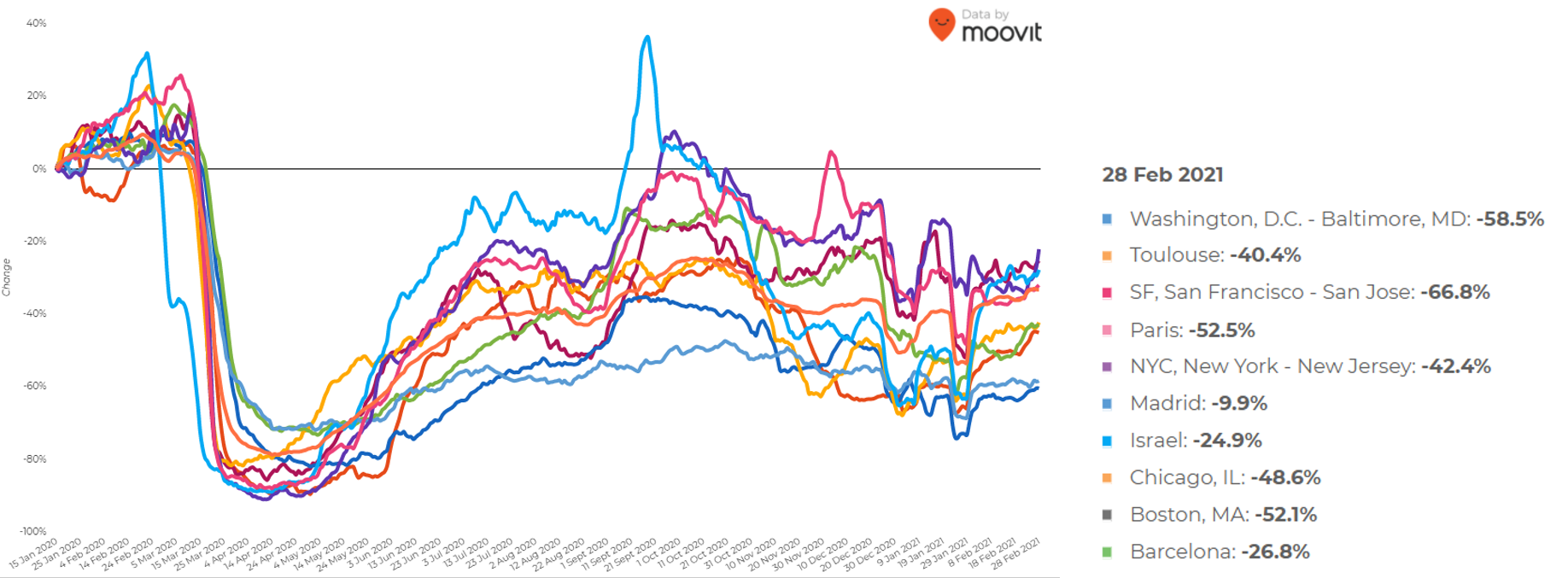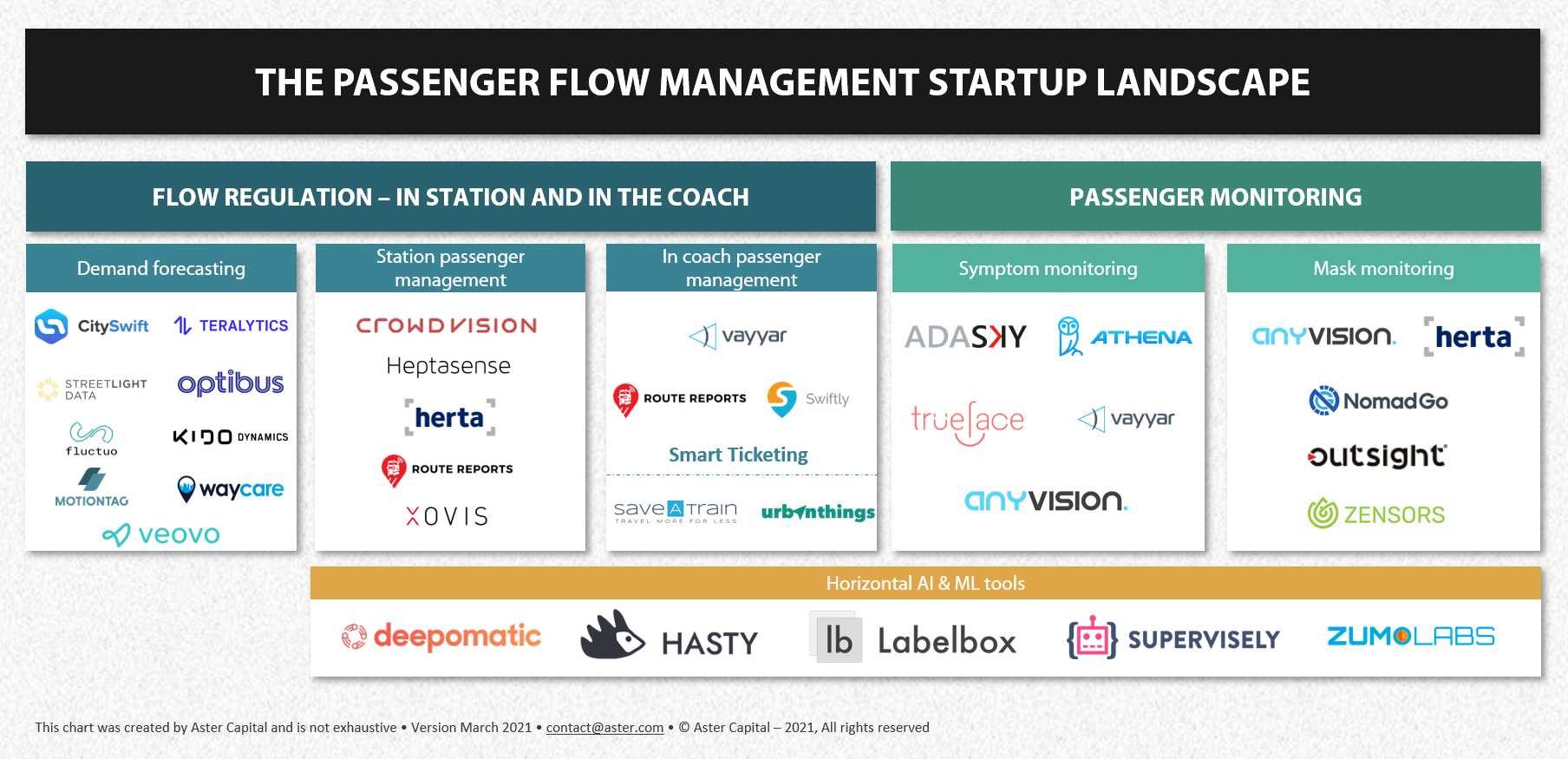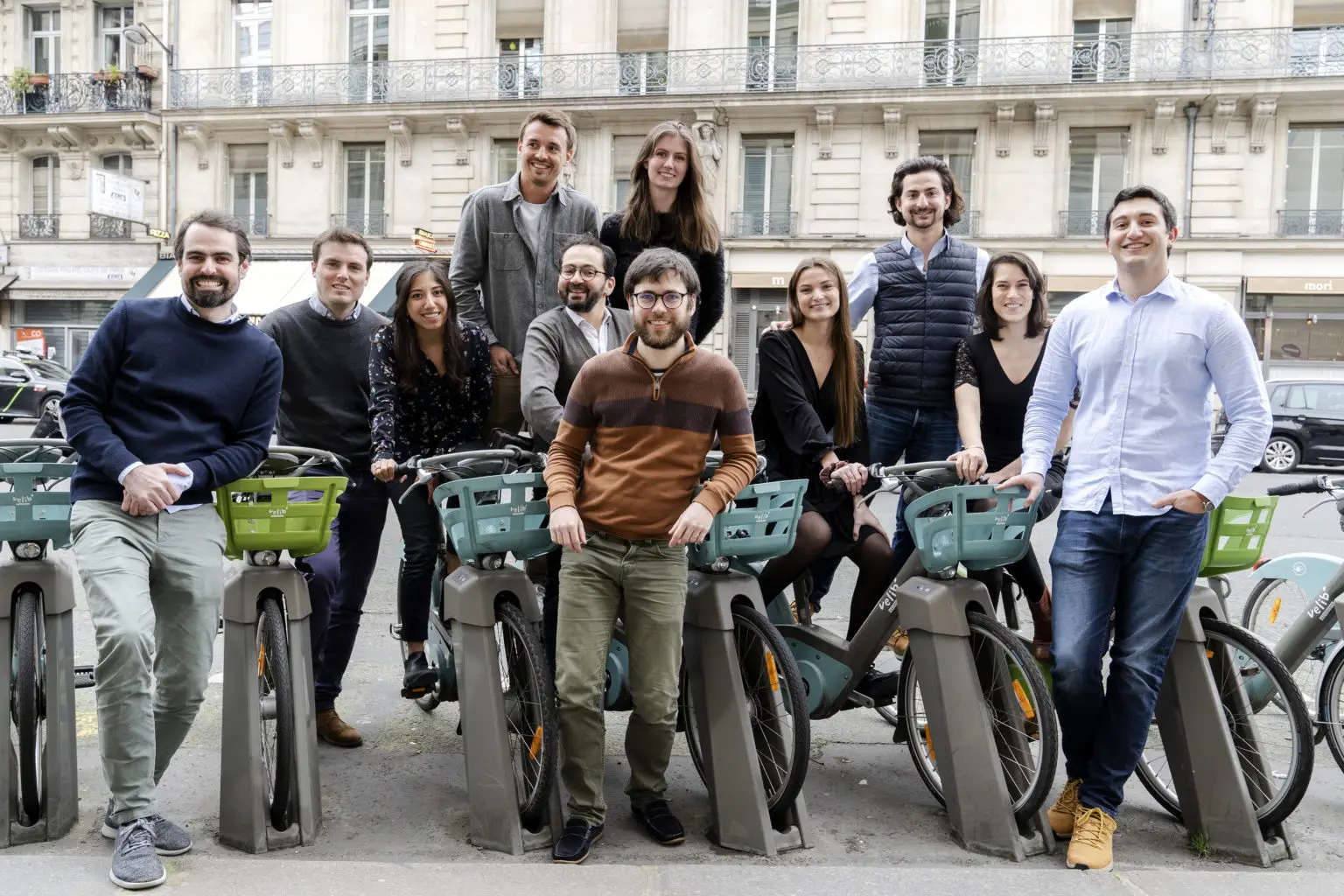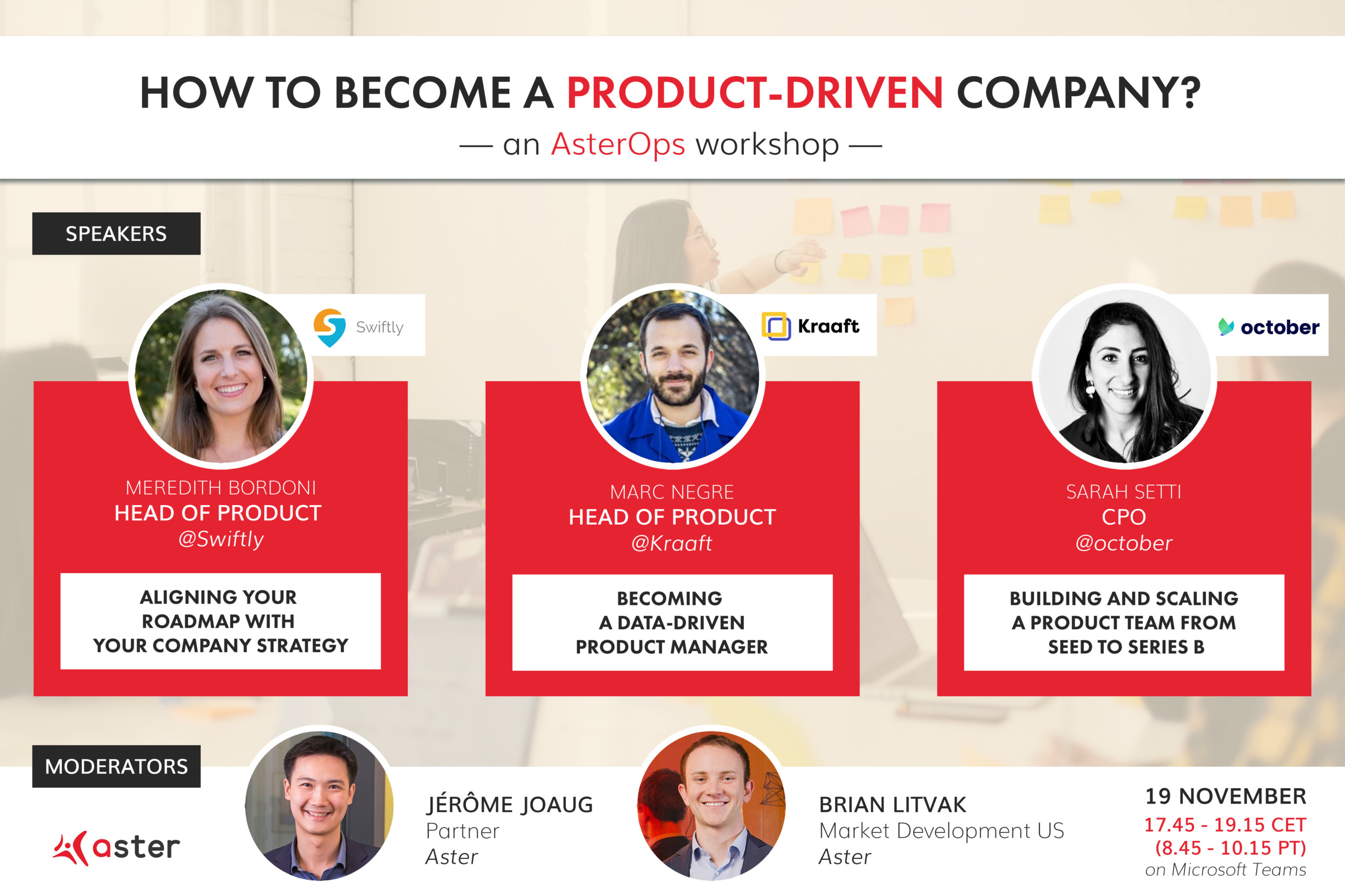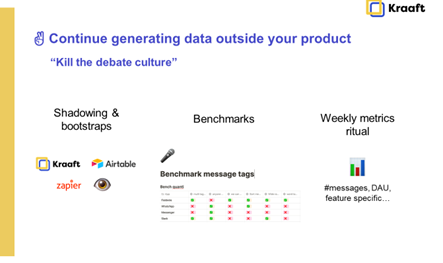Public transportation was already facing many challenges before the pandemic broke out, such as budget constraints (high operating and maintenance costs with low investments), declining ridership (resulting from the emergence of new ride-hailing and micromobility offers) and a mismatch between the objectives and expectations of the authorities, public transport operators (PTO) and commuters.
The pandemic has accentuated the pressure on the sector, bringing passenger flows to a historically low level. Although commuters are gradually returning to using public transportation (see exhibit 1), the number of commuters remains lower than in other years, as does income. Despite the $25 billion provided to US transit agencies to respond to Covid-19, they are expected to face a shortfall of $23.8 billion by the end of 2021.

